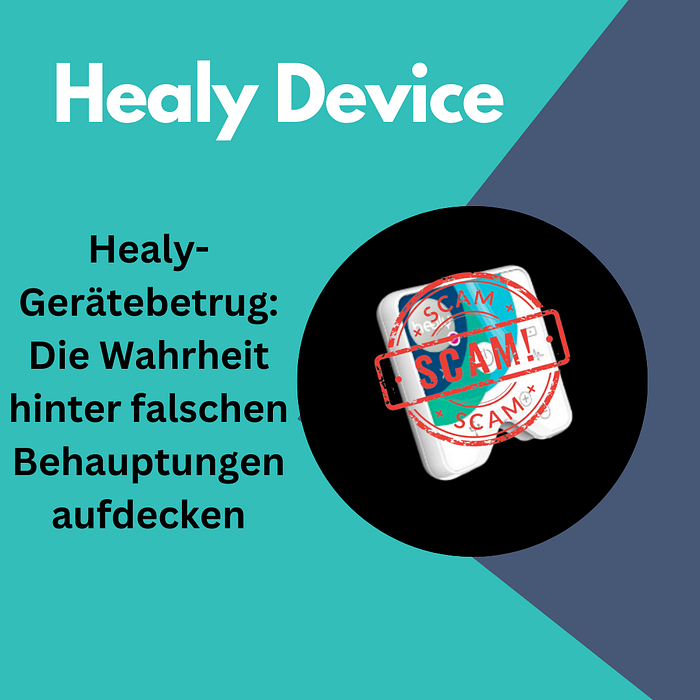Uncovering the Truth: Healy Device Scam Exposé

In the age of wellness gadgets and holistic health trends, the Healy Device has emerged as a controversial figure. Marketed as a revolutionary tool for improving well-being through frequency therapy, it has gained significant attention and a dedicated following. However, beneath the surface lies a web of misleading claims, questionable practices, and disappointed customers. In this exposé, we delve into the truth behind the Healy Device, unraveling the layers of its scam.
The Alluring Promises of the Healy Device
The Healy Device is advertised as a compact, wearable gadget capable of delivering personalized frequency therapy to address various health issues. From chronic pain and stress to sleep disorders and even mental health conditions, the device claims to harness the power of frequencies to restore balance and promote healing. Such promises, if true, would undoubtedly be groundbreaking. However, a closer look reveals a different story.
Questionable Scientific Basis
One of the most glaring issues with the Healy Device is its lack of solid scientific backing. The concept of frequency therapy is not entirely new, but its efficacy remains highly debated within the scientific community. The Healy Device’s proponents often cite anecdotal evidence and testimonials as proof of its effectiveness, yet there is a conspicuous absence of rigorous, peer-reviewed studies to support these claims.
Moreover, the explanations provided for how the device supposedly works are often steeped in pseudoscientific jargon. Terms like “bioenergetic field” and “quantum sensor” are thrown around without clear definitions or explanations, making it difficult for even educated consumers to discern the validity of the technology.
Exorbitant Costs and Hidden Fees
The Healy Device is not a cheap investment. Priced at several hundred dollars, it represents a significant financial commitment for many. But the costs don’t stop at the initial purchase. Users quickly find themselves pressured into purchasing additional modules and subscriptions to access the full range of the device’s supposed capabilities. These upsells can easily double or triple the initial cost, leaving consumers feeling trapped and exploited.
Misleading Marketing Tactics
The marketing strategies employed by Healy World, the company behind the device, are another red flag. The company relies heavily on multi-level marketing (MLM) tactics, encouraging users to become distributors and recruit others to join the network. This pyramid-like structure often results in more focus on recruitment than on the product itself, with distributors making grandiose claims to lure new members.
Additionally, the heavy use of social media influencers to promote the device has created an echo chamber of positive testimonials. These influencers, often compensated for their endorsements, contribute to a biased portrayal of the device, overshadowing genuine user experiences and complaints.
Real Stories of Disappointment
Behind the glossy testimonials and influencer endorsements lies a growing number of dissatisfied users. Online forums and consumer review sites are rife with stories of people who invested in the Healy Device only to find it ineffective or even detrimental. Complaints range from experiencing no noticeable improvements to suffering from worsening symptoms.
For instance, Sarah, a former Healy user, shared her story: “I bought the Healy Device hoping it would help with my chronic pain. After months of use, I saw no improvement at all. Worse yet, the constant pressure to buy more modules made me feel like I was being scammed.”
Regulatory Concerns and Legal Issues
The Healy Device has also attracted the attention of regulatory bodies in several countries. In some cases, the device has been flagged for making unsubstantiated health claims, leading to fines and warnings. Such regulatory scrutiny further underscores the dubious nature of the product and its marketing practices.
Conclusion: Buyer Beware
The Healy Device is a prime example of how the wellness industry can exploit vulnerable consumers with lofty promises and pseudoscientific claims. While the idea of a device that can improve health through frequency therapy is appealing, the reality falls far short of the hype. With its questionable scientific basis, exorbitant costs, misleading marketing tactics, and a trail of disappointed users, the Healy Device stands as a cautionary tale.
Before investing in any wellness gadget, it’s crucial to conduct thorough research, seek out unbiased reviews, and consult with medical professionals. In the case of the Healy Device, the evidence suggests that potential buyers should proceed with extreme caution, lest they fall victim to what appears to be a sophisticated scam.